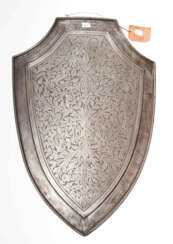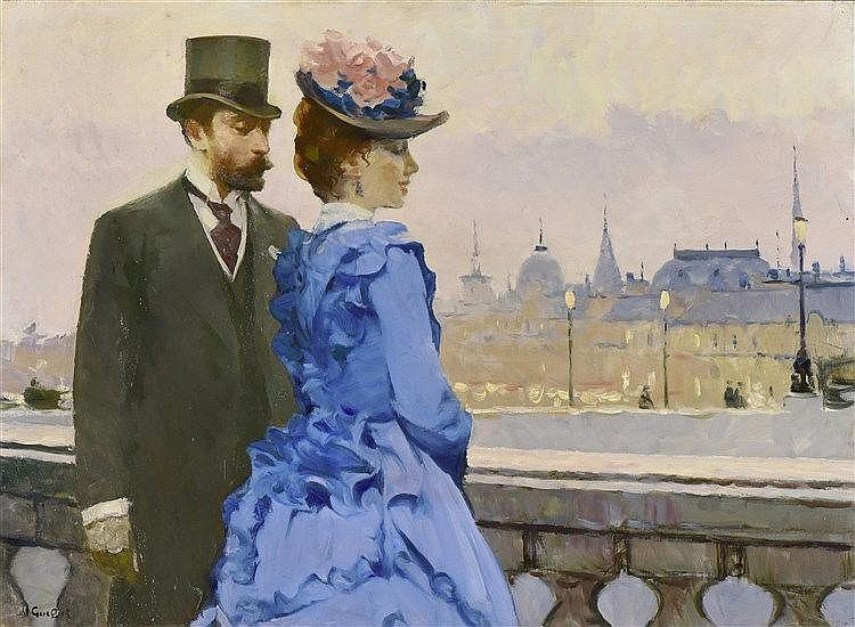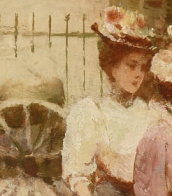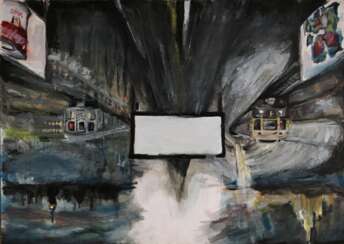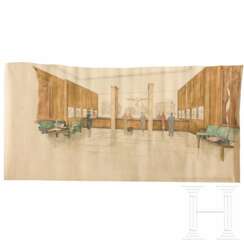28403 Items by auctions and galleries:
tor
THE STORY-TELLER. СКАЗОЧНИК.
Mihail Victorov (b. 1959)  Shop Victorov Mihail
Shop Victorov Mihail

Mihail Victorov
18.05.1959
Russia
Михаил Викторов окончил Воронежскую художественную школу, художественное училище, архитектурный факультет Инженерно-строительного института. В разные годы своей творческой деятельности занимался дизайном рекламы и интерьеров, монументальной живописью, резьбой по дереву, работал художником на Воронежском государственном телевидении, лауреат архитектурных конкурсов и конкурсов плаката.
Михаил доцент кафедры дизайна Воронежского Государственного Педагогического Университета, ассоциированный академик международной академии искусств "Greci-Marino" Academia del Verbano (г. Турин, Италия). Он является членом Союза театральных деятелей России. По его эскизам поставлено более 70 спектаклей в Воронеже, Ярославле, Волгограде, Кирове, Ростове-на-Дону, Екатеринбурге, Орле, Ногинске, Оренбурге...
Викторов был участником более 60 выставок, три из которых – персональные в Москве. В 1999, по приглашению русского представительства американского журнала PCWEEK, художник стал участником виртуального проекта “art-gallery.ru”. В 2000 году живописные произведения Михаила были представлены в экспозиции международного фестиваля искусств “Мастер класс“ в Санкт-Петербурге. В октябре 2001 года прошла персональная выставка Михаила Викторова в программе Кентерберийского международного фестиваля искусств (Англия), а в 2003 году – в Белграде (Сербия). Он участник Второй Международной Биеннале Графики в Санкт-Петербурге в 2004 году.
В 2004, 2005 годах произведения Михаила Викторова вошли
в каталоги “Искусство России” и “International encyclopedic dictionary of modern and contemporary art 2005/2006”
Михаил получил 1 премию и золотую медаль на международном конкурсе “SANTA MARIA DELLE ARTI 2006 19th edition” (г. Турин, Италия). Работы художника находятся в музеях, частных и корпоративных коллекциях России, США, Германии, Англии, Ирландии, Франции, Австрии, Испании, Италии, Греции.

Artist shop
Victorov Mihail
Russia
Number of products: 18
Kremenets sugar factory
Viktoria Voloshina (b. 2000)  Shop Voloshina Viktoria
Shop Voloshina Viktoria

Viktoria Voloshina
07.06.2000
Ukraine
Я – современная художница из Украины 2000 года рождения. Увлекаясь искусством с детства, в более зрелом возрасте я поняла что оно всегда будет неотъемлемой частью моей жизни. Мой стиль формировался годами проб и экспериментов как с тематикой произведений, так и с материалами для их создания, окончательно сформировав свой стиль в начале 2018того, найдя отклик души в линиях архитектуры, настроении улиц, истории мест и их изменчивости.
С тех пор большая часть моих работ стала связана с урбанистикой, а в качестве материала в предпочтениях акрил из за его быстрого схватывания, позволяющего запечатлеть мимолётное настроение и атмосферу того или иного пейзажа. Все пейзажи, которые отображены в моих картинах - это места Украины, преимущественно Киева. Можно сказать, что искусство стало для меня своеобразной "терапией" и успокоением, и мне хочется что бы глядя на мои работы зрители ощущали то же самое, созерцая сдержанную гамму и локальные мелкие детали.
Выпускница ДХСШ им.Т.Г.Шевченка
В 2018 поступила в НАОМА

Artist shop
Voloshina Viktoria
Ukraine
Number of products: 14
Curator of the World
Serge Lilac (b. 1992) 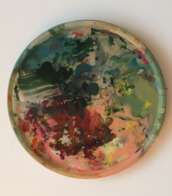 Shop Lilac Serge
Shop Lilac Serge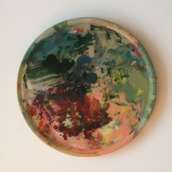

Serge Lilac
31.07.1992
Russia
I explore the themes of human personalization and depersonalization, the influence of external factors on the personality of a person, the parallels between character traits and the techniques of fine art in my works. The past and the present, life and death, religion and science, rhythm and rest. Finding the points of contact with inspiration in unexpected and the most secret corners of my consciousness, I want to show the world my own personality and attitude through creativity.

Artist shop
Lilac Serge
Russia
Number of products: 26
Terminator-2, Arnold Schwarzenegger
Julia Lihina (b. 1984)  Shop Lihina Julia
Shop Lihina Julia

Julia Lihina
10.11.1984
Ukraine
Я, Юлия Лихина, родилась в Харькове, Первой столице Украины, 10 ноября 1984 года. Была очень непоседным и упертым ребенком, постоянно меня носило где-то. Мама смотрела на меня, и хоть как ни будь меня угомонить, показала и научила рисовать в 3 года. Мои первые полотна - это стены, полы и мебель в доме. Потом изостудия в 5 лет и в художественная школа (1994-1999), которую закончила с отличием. И это дало мне двигаться дальше, так как дальше не представляла себя без красок и искусства.
Образование
Так же с отличием закончила Харьковское Художественное Училище в 2007, факультет художник –живописец преподаватель.
Хоть и закончила учёбу, но работать по специальности не хотела, не видела себя училкой в школе, это точно не моё.
Когда училась в училище иногда рисовала картины на заказ, и один раз меня друг попросил написать несколько картин из фильма, на что сначала удивилась , а потом очень заинтересовалась, и попёрло меня с того момента. Даже диплом писала и брала основы с фильма. Кино я обожаю, смотрю их с детства и сейчас все новинки не пропускаю, особенно выделяю жанры: биография, триллер, криминал, детектив, комедия, история, спорт, драма и мелодрама.
Когда закончила учебу, вышла замуж, потом дети погодки, не до картин было, пыталась рисовать, но малышня не давала, мешали.
В декрете освоили сетевой маркетинг и когда работала в интернете, видела, как многие художники рисуют и продают свои картины, даже зависть где-то появилась, типа, а чем я хуже. Очень долго решалась начинать рисовать, если бы не родственники и друзья, которые дали мне пинок под зад…)))

Artist shop 

Lihina Julia
Ukraine
Number of products: 13
Lot 11075 Paul Dencker - two plant ID cards of the Buna-/Leuna-Werke, business cards, photos and letters of the former me´mber of the board of directors of the Bayer AG
A107r: Orden und Militaria ab 1919 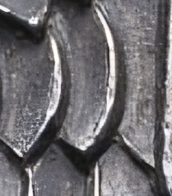

Hermann Historica
A107r: Orden und Militaria ab 1919
Date: 14.11.2025 10:00 UTC +01:00
Number of lots in the catalog: 965
VICTORY
Alex SAVART (b. 1958)  Shop SAVART Alex
Shop SAVART Alex

Alex SAVART
06.05.1958
Russia
SMIRNOV ALEXEY VALENTINOVICH (SAVART)
Alexey Smirnov is a contemporary, distinctive artist working at junction of fine art with its inherent esthetics and contemporary art with its intentional “madness”, challenge and hidden meaning.
For many years the painter have been trying to find himself. Never copying any of his colleagues-artists he refined his mastership, searched for his own artistic language. Soon these endeavours began to produce results – Alexey formed his original bright and remarkable volume technique of painting works of art.
The creative work of Alexey Smirnov differs with his enhanced sensitive perception of life, search of new means of expression consonant with modern times. The principal theme of Alexey Smirnov’s art is modernity. In his works the perception of environment loses its single-valuedness. Almost each painting makes the viewer to contemplate it long while, provoking a number of associations and deliberations. In his works one can often observe the collision of the mundane and the fantastic, interlacing of lyric and grotesque, romance and irony.
The characteristic feature of the author’s plastic language is a sharp feel of colouring, expression and fascination with texture, all of it allowing realize both formal decorative and conceptual psychologic tasks. Through the half-opened door of his art the author invites the viewer to make a step into the unknown, where vibrations of picturesque lines, gorgeous forms and fantastic constructions are filled with sense and obtain their ethereal tangibility, transform into structures of the World around us. The World consisting not of things and subjects but of essences, powers and energies. The play of lines of the picture, surfaces of colour and space in the artist’s compositions form metaphorical image of beingness, put in motion the viewer’s intellect, encouraging him for self-perfection and finding knowledge of eternal secrets of the universe.

Artist shop
SAVART Alex
Russia
Number of products: 58
Lot 5026 An Imperial Honor Goblet for the Victor in Air Combat of Oberleutnant Richard Falke
A106us: A US Lifetime Headgear Collection and other Imperial and WW II Collectibles 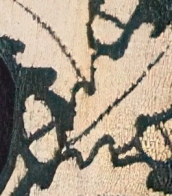

Hermann Historica
A106us: A US Lifetime Headgear Collection and other Imperial and WW II Collectibles
Date: 08.11.2025 14:00 UTC +01:00
Number of lots in the catalog: 511
Lot 5067 A Visor Cap for a Motorcycle Reconnaissance Officer
A106us: A US Lifetime Headgear Collection and other Imperial and WW II Collectibles 

Hermann Historica
A106us: A US Lifetime Headgear Collection and other Imperial and WW II Collectibles
Date: 08.11.2025 14:00 UTC +01:00
Number of lots in the catalog: 511
Lot 5068 A Visor Cap for a Motorcycle Reconnaissance Officer
A106us: A US Lifetime Headgear Collection and other Imperial and WW II Collectibles 

Hermann Historica
A106us: A US Lifetime Headgear Collection and other Imperial and WW II Collectibles
Date: 08.11.2025 14:00 UTC +01:00
Number of lots in the catalog: 511
Lot 5069 A Field Cap for Heer Motorcycle/Reconnaissance Enlisted/NCO
A106us: A US Lifetime Headgear Collection and other Imperial and WW II Collectibles 

Hermann Historica
A106us: A US Lifetime Headgear Collection and other Imperial and WW II Collectibles
Date: 08.11.2025 14:00 UTC +01:00
Number of lots in the catalog: 511
Lot 5070 A Tropical Field Cap for Heer Motorcycle/Reconnaissance Enlisted/NCO
A106us: A US Lifetime Headgear Collection and other Imperial and WW II Collectibles 

Hermann Historica
A106us: A US Lifetime Headgear Collection and other Imperial and WW II Collectibles
Date: 08.11.2025 14:00 UTC +01:00
Number of lots in the catalog: 511
Lot 5345 A Visor Cap for NSKK Motor Schools Driving Instructor
A106us: A US Lifetime Headgear Collection and other Imperial and WW II Collectibles 

Hermann Historica
A106us: A US Lifetime Headgear Collection and other Imperial and WW II Collectibles
Date: 08.11.2025 14:00 UTC +01:00
Number of lots in the catalog: 511
Lot 5430 A Parade uniform and visor for a sergeant of the Motorcycle and Reconnaissance Division 64
A106us: A US Lifetime Headgear Collection and other Imperial and WW II Collectibles 

Hermann Historica
A106us: A US Lifetime Headgear Collection and other Imperial and WW II Collectibles
Date: 08.11.2025 14:00 UTC +01:00
Number of lots in the catalog: 511







